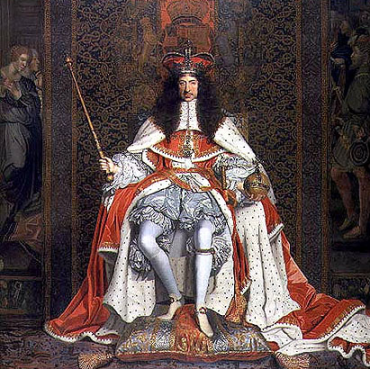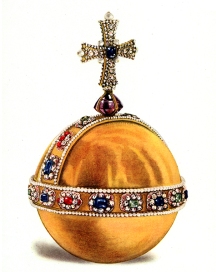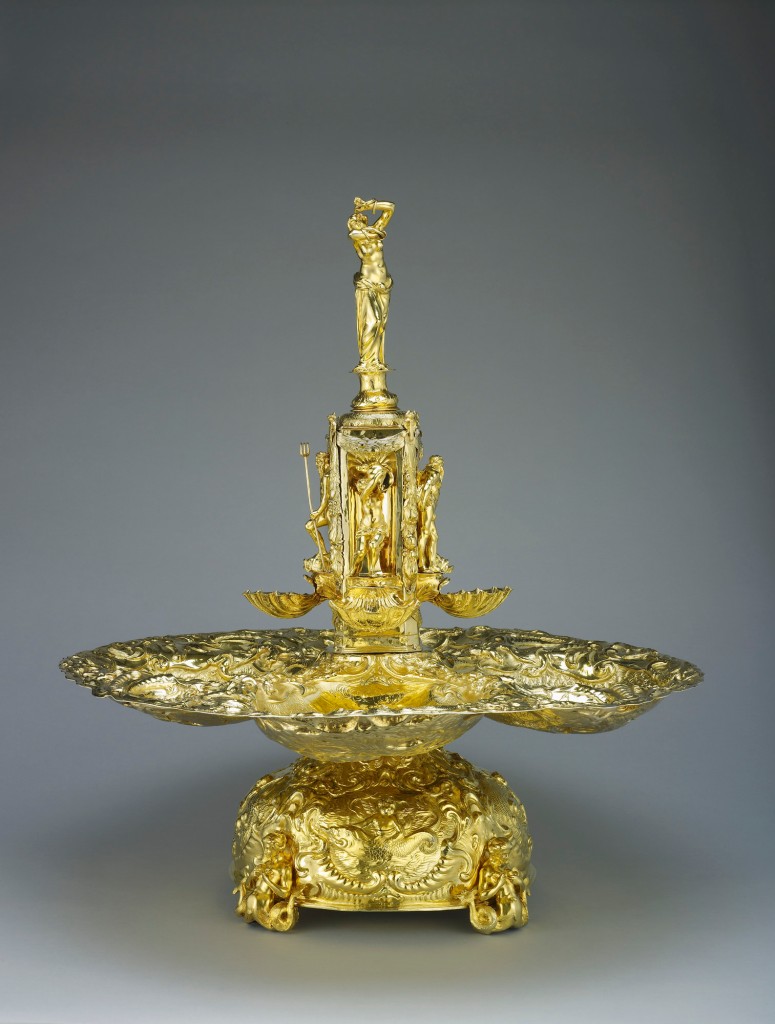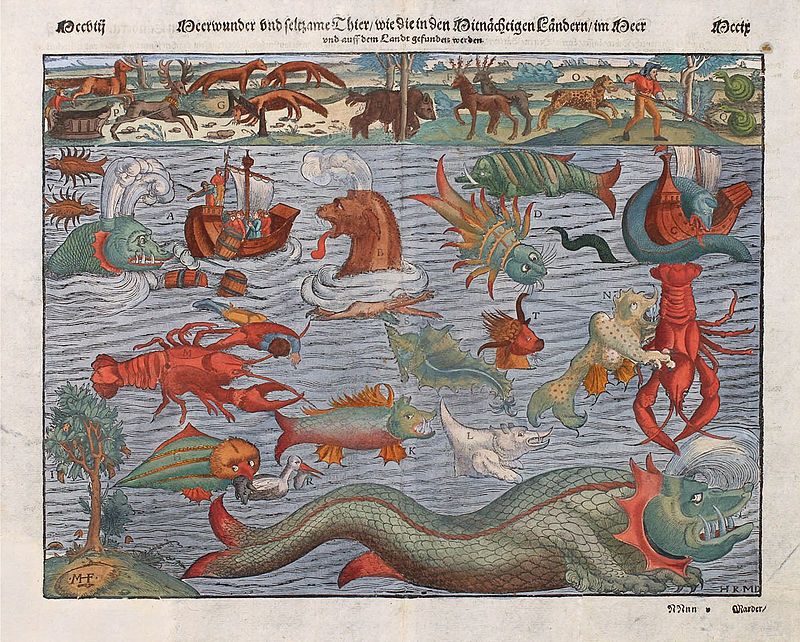On the first day of the England Tour-Fest 2016 (also known as the ‘cover England in two weeks trip), we hit the Tower of London. I was travelling with fellow historical fiction writer, Sally Moore, and together, we were armed with a comprehensive itinerary that a drill sergeant would have envied. For two history geeks like ourselves, there was no question about kicking off the tour here.
We had both visited the Tower before, but there is always something new to discover. It’s a remarkable fortress, situated across from London Bridge and hugging the Thames. William the Conqueror built this castle after the Norman conquest. The Tower of London can best be described as a power statement for the Normans: we’re here and we’re staying.
Over the years, the Tower evolved from a garrison to a royal residence, and more infamously, a dreaded prison. This is the place where you keep the things you most want to guard. Like the the Crown Jewels …and a hidden lobster.
Yes, a lobster.
One of the first stops we made in the Tower was the gift shop, and we met a very chatty and pleasant shop girl. She blithely asked us if we had seen the Crown Jewels. Answer: not yet. Then with a knowing grin, she asked if we had heard about the lobster in the Crown Jewels. This was news to us.
When pressed for details, the shop girl clammed up as though she had already spilled too much. I could only imagine what they told her in orientation. “Whatever you do, Gail, do not mention the lobster! There will be no living with the tourists if you do.”
So she went into recovery mode like a pro and tried to distract us by selling us on their fine selection of umbrellas, bottled water and Tower pencils. But it was too late. We had to find the lobster.
The game was afoot.
Contrary to their name, the Crown Jewels aren’t just a collection of flashy crowns and jewellery. They quite simply refer to the regalia needed to crown a king, including the vestments, plate processional and anointing objects. If you’ve seen Crown on Netflix, you’ll understand the almost mystical symbolism of the regalia in the transformation of a person into a full fledged monarch.

For that reason, when King Charles I was executed by Parliament in 1649, Oliver Cromwell made a point of breaking up (and/or selling) most of the Crown Jewels so they could never remake a king again. That was the idea, but when Charles II was invited to once more take up the throne eleven years later, a new batch were created.
The only thing remaining of the old regalia was a medieval anointing spoon and three swords: the Sword of Mercy, the Sword of Spiritual Justice and the Sword of Temporal Justice.
Our first stop to discover the mystery of the lobster was to visit the Jewel House where the Crown Jewels are stored under very tight security. Once upon a time, an audacious Irishman, Colonel Thomas Blood, tried to abscond with a few items. They say that in order to smuggle one of the crowns past the guards, he beat it with a mallet to flatten it. Blood made it to the gates before he was foiled and since then, security has been considerably more robust.

In the Jewel House, a treasure trove of crowns are on display: Consort Crowns, Imperial State Crowns, and even everyday non-coronation crowns that the lucky monarch can just kick about the palace with. But the oldest is St. Edward’s Crown. Created in 1661 for Charles II’s coronation, it is encrusted with over 400 precious and semi-precious stones, pearls and ermine. Truly spectacular.
Tourists are allowed to gawk at the Crown Jewels, but to keep everyone from loitering, they have rigged up a conveyor belt to keep everyone moving along. The moving walkway makes it harder to stop and examine the crowns for marine life, but fortunately we were able to repeat our pass several times experimenting with different angles. The verdict…no lobster.
We continued through the swords and staffs and trumpets. The staff of St. Edward is curious as it was a gold walking stick made for Charles II. They created a copy from the medieval staff, but no one knows what it was used for in the coronation ceremony. After a thorough examination of the staff, the verdict…no lobster.
Next the vestments and ornaments. The golden spurs, also known as St. George’s spurs, symbolized the monarch as a military head as well as the symbol of knighthood and chivalry. Golden armills are bracelets symbolizing wisdom and honesty. The 17th century versions are decorated only with the symbols of the 3 kingdoms: the Tudor rose, Scottish thistle and the Irish harp, as well as the French fleurs-de-lis.
The famous golden orb is the symbol of sovereignty and held by the left hand when the monarch leaves Westminster Abbey. You’ll see it in all the coronation portraits. Yes, you guessed it…no lobster.
Finally, we wandered over to the plate. There was the altar plate and the banqueting plate. I suppose this really should have been the first place we looked. Where else would you find a lobster than on banqueting plate–unless you don’t like the taste of lobster, in which case I truly pity you.
I have to admit that at this point we didn’t find the lobster. We left in defeat and returned to the gift shop to demand the answer from the shop girl but she had finished her shift and was no where to be found. Later, I hit the internet and googled it but could not find a reference to lobster + Crown Jewels. All I succeeded in doing was making myself hungry.
But now I think I’ve found it. The Plymouth fountain. It was fashioned by a German goldsmith and presented by the city of Plymouth to Charles II in July 1660. Instead of using water, it was a wine fountain. Very clever contraption and ironically amusing that it was created for Charles, the Merry Monarch.
The figure at the top of the fountain was originally Hercules, but much later (not by Charles) it was replaced by Venus. The fountain was said to sprout coloured flames and perfumed waters. The original figure held a perfume burner, or pastille, but this was removed when they added Venus.

The Plymouth fountain is decorated with marine creatures, both real and fantastical: dolphins, mermaids and sea monsters. Could the lobster be the sea monster? In 16th century maps depicting sea monsters, they included lobsters in the category of sea monsters.

The Royal Collection Trust has detailed pictures of the fountain, but it is hard to spot a lobster. There are parts that look like there might be, but the entire contraption is just too gold and shiny to really make it all out.
I may never know for certain, but I’m reasonably certain that I solved the mystery.
Give a shout out if you know anything about the case of the Lobster in the Tower. Obsessive minds need to know.
Media:
All pictures of the Tower have been taken by the author. Please do not use without permission.
Charles II Coronation Portrait: By John Michael Wright – From http://www.royal.gov.uk/output/Page92.asp; [Public Domain] via Wikimedia Commons
St. Edward’s Crown: By Cyril Davenport (1848 – 1941) – G. Younghusband; C. Davenport (1919). The Crown Jewels of England. London: Cassell & Co. p. 2., Public Domain via Wikimedia Commons
The King’s Orb: By Cyril Davenport (1848–1941) – ‘The King’s Orb’ from: G. Younghusband; C. Davenport (1919). “The Crown Jewels of England”. London: Cassell & Co. p. 38., Public Domain via Wikimedia Commons
The Plymouth Fountain: Royal Collection Trust
Carta Marina: By Sebastian Münster – Public Domain via Wikimedia Commons




Totally, the fountain is where I said it must be, but alas, looked and looked, and could not actually make out the spiny creature for sure. I secretly think that shop girl was an apparition, the reincarnation of a plucky, mischievous spirit once detained in the Tower apartments. Whoever she is, she certainly knows how to begin a story with a hook. Not so good at following through to the third act though. I say we head back there next year and renew our search for all things Restoration and jewel related.
LikeLiked by 1 person
She definitely sent us on a merry chase. We might need to bring binoculars to get a better look at some of the details.
LikeLiked by 1 person